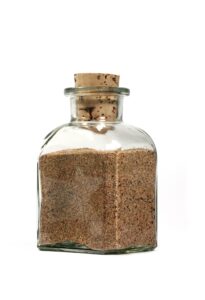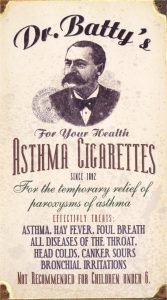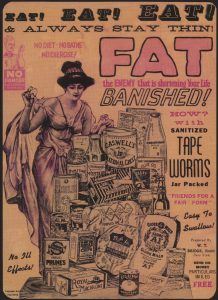I’m attempting to use the long ‘s’ for this transcript – I hope Wordpreſs doesn’t do anything weird with it:
.
HYſtericon, or Antidote againſt Fits, Vapours,
Hypochondriack Melancholy, Vertigoe, Gid-
dineſs or Swimming in the Head, Phrenzy, or
Deprivation of Senſes, Suffocations, or Riſings in
the Throat, Faintings, Swoonings, &c. (common-
ly called Fits of the Mother) for all which, it’s a
moſt admirable thing for Prevention as well as
Cure, whether the Cauſe be Suppreſſion, or Stop-
page of the Spleen, &c. or Hypochondriack, in
admirably prevailing againſt, and taking away
the very Cauſe of ſuch Diſtempers, that they ſel-
dom return again; wonderfully comforts, relieves
and cheriſhes Languiſhing Nature, reſtores and
corroborates the weaken’d Faculties, revives the
Spirits, and enlivens the whole Body, with ſo
much Celerity, Eaſe, Safety, and Pleaſure, that
it has ſcarcely its Equal. Sold at Mr Stephens’s
in Broadſtreet, near the Royal-Exchange, at
1s. 6d. a Bottle, with Directions.
Source: A Review of the Affairs of France, 12 April 1705
.
Ancient Greco-Roman theories of gynaecology presented the womb as a roving organ that could end up out of place within the body, even interfering with the brain or causing choking sensations in the throat. Independent and troublesome, it was attracted to pleasant smells and repulsed by foul ones. If a woman showed hysterical symptoms, this must be due to the womb rising, and it made sense to waft a variety of unpleasant substances in front of her face in order to deter the rogue womb from travelling any further.
By the 18th century the structure – and stationary nature – of the womb had been determined, but the traditional remedies persisted and a woman suffering from ‘fits of the mother’ might be assailed with any number of strong smells – for example sal ammoniac, asa foetida, garlic, bitumen or burnt feathers. Some doctors thought blowing tobacco fumes directly into the woman’s mouth would do the trick. Thomas Otway joked about this in his comedy A Soldier’s Fortune (1681), where Clarinda describes her decrepit husband Sir Davy thus:
“Then for his Person ’tis incomparably odious; he has such a breath, one kiss of him were enough to cure the fits of the mother, ’tis worse than assa foetida”
I don’t know whether the Hystericon (which I haven’t been able to find advertised anywhere except as above in Defoe’s Review) was supposed to be smelled or ingested, but there were certainly medicines to be taken inwardly – though not necessarily from the head end of the alimentary canal. Camomile clysters were one option, while oral medicines might contain amber (in salt or oil form) or herbs such as mugwort and valerian. Should convulsions occur, the Peruvian bark was recommended, and of course the ubiquitous blood-letting was always worth a try.
John K’eogh, in Zoologia Medicinalis Hibernica, (Dublin, 1739) a book about the medicinal properties of animals, described the following strange remedy:
A girdle made of the skin of a buck killed in coition with a doe, squeezed about the belly in the paroxysm or fit, is said to cure the suffocation of the Womb, or fits of the Mother.
But however peculiar the 18th-century remedies, the Victorian fascination with hysteria produced some far more discomfiting treatments. Thankfully this post is long enough without describing them!



Oh, please describe the Victorian cures tomorrow then…I need to know! Am just writing such a scene and have made up a silly sounding ‘blood medicine’. But, any real ones gratefully received…
I think you will like the Victorian cures! I have some other posts lined up first though.
As to blood medicines, Clarke’s World-Famed Blood Mixture was a famous one – even alluded to in Dracula. Or there were various Sarsaparilla-based cures such as Hood’s, but these weren’t really related to hysteria. What happens in the scene? If it’s a one-off ‘fit of the vapours’, another character could just have smelling salts to hand, but if it’s a longer-term medical diagnosis of ‘hysteria’ you are getting into a whole ‘nother sub-plot!
Ah ha…I shall sit tight and enjoy all, as and when they appear on the blog… love it! Keep up the good work, Doctor Rance!
A girdle made of the skin of a buck killed in coition with a doe, squeezed about the belly in the paroxysm or fit, is said to cure the suffocation of the Womb, or fits of the Mother.
That is one of the strangest remedies and one of the most difficult to find, I would imagine. How people can think up these things.